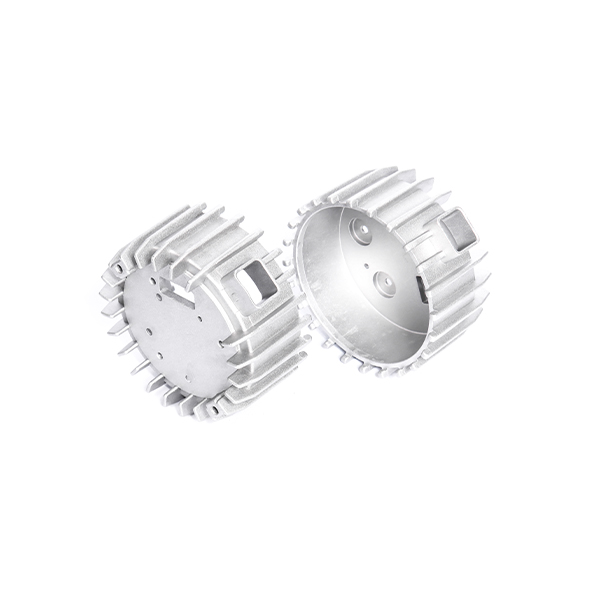Mobile:+86-311-808-126-83
Email:info@ydcastings.com
Understanding the Process of Die Casting and Its Applications in Manufacturing
Understanding Die Casting An In-Depth Overview
Die casting is a widely adopted manufacturing process used for creating metal parts by forcing molten metal into a mold (die). This method is favored for its ability to produce high-precision components with complex shapes and excellent surface finishes. Die casting is employed in various industries, including automotive, aerospace, electronics, and consumer goods, owing to its efficiency and cost-effectiveness. In this article, we will explore how die casting is done, examining the materials, processes, and advantages it offers.
The Die Casting Process
The die casting process involves several key steps preparation, melting, injection, cooling, and ejection.
1. Preparation Before the die casting begins, the die must be designed and manufactured. Dies are typically made from high-strength steel or other materials that can withstand the high pressure and temperatures involved in the process. The design includes specific features to ensure easy ejection of the cast part and proper alignment during injection.
2. Melting The metal to be cast, often aluminum, zinc, or magnesium, is melted in a furnace. The choice of metal depends on the required properties of the final product, such as weight, strength, and resistance to corrosion. The molten metal is kept at a controlled temperature to maintain its flowability during the injection phase.
3. Injection Once the metal is melted, it is injected into the die under high pressure, typically ranging from 1,000 to 30,000 psi. This high pressure ensures that the molten metal fills all the intricate molds and cavities of the die quickly, minimizing the risk of defects like air pockets or incomplete filling. The injection process is often automated, with machines capable of providing consistent and precise control over the injection speed and pressure.
4. Cooling After the molten metal fills the die, it is allowed to cool and solidify. Cooling times depend on the thickness of the cast and the type of metal used. The die, which is often water-cooled, helps to expedite this process, allowing for shorter cycle times and increased production rates.
5. Ejection Once the metal has cooled and solidified, the die opens, and the finished part is ejected. Ejector pins or plates are commonly used to push the part out of the die without causing damage. After ejection, the casting may require additional finishing processes, such as trimming, machining, or surface treatment, to meet specified tolerances and surface requirements.
Types of Die Casting
There are two primary types of die casting hot chamber and cold chamber.
how is die casting done

- Hot Chamber Die Casting In hot chamber die casting, the melting pot is attached to the die, allowing for a continuous supply of molten metal. This method is suitable for metals with low melting points, such as zinc and lead. It offers rapid production rates and is economical for high-volume runs.
- Cold Chamber Die Casting Cold chamber die casting involves transferring the molten metal from a separate furnace into the die. This method is used for metals with higher melting points, such as aluminum. Although the process is slower than hot chamber die casting, it allows for greater flexibility and is often employed when designing complex or thicker parts.
Advantages of Die Casting
Die casting offers numerous advantages that contribute to its popularity in manufacturing
1. Precision and Accuracy The die casting process produces parts with tight tolerances, reducing the need for extensive machining or finishing.
2. Complex Shapes Die casting can create intricate geometries that are difficult or impossible to achieve using other manufacturing methods.
3. Material Efficiency The process generates minimal waste, as excess metal can often be recycled.
4. High Production Rates Die casting can produce large volumes of parts in a relatively short time, making it ideal for mass production.
5. Cost-Effective Although the initial cost of making dies can be high, the cost per unit decreases significantly with high-volume production, resulting in overall savings.
Conclusion
In conclusion, die casting is a vital manufacturing process that combines efficiency, precision, and versatility. By understanding how die casting is done, manufacturers can harness its benefits to produce high-quality metal parts for various applications. As technology advances, die casting will continue to evolve, leading to new innovations and improved production techniques.
-
Why Should You Invest in Superior Pump Castings for Your Equipment?NewsJun.09,2025
-
Unlock Performance Potential with Stainless Impellers and Aluminum End CapsNewsJun.09,2025
-
Revolutionize Your Machinery with Superior Cast Iron and Aluminum ComponentsNewsJun.09,2025
-
Revolutionize Fluid Dynamics with Premium Pump ComponentsNewsJun.09,2025
-
Optimizing Industrial Systems with Essential Valve ComponentsNewsJun.09,2025
-
Elevate Grid Efficiency with High-Precision Power CastingsNewsJun.09,2025











